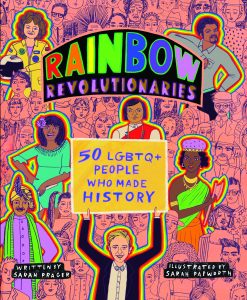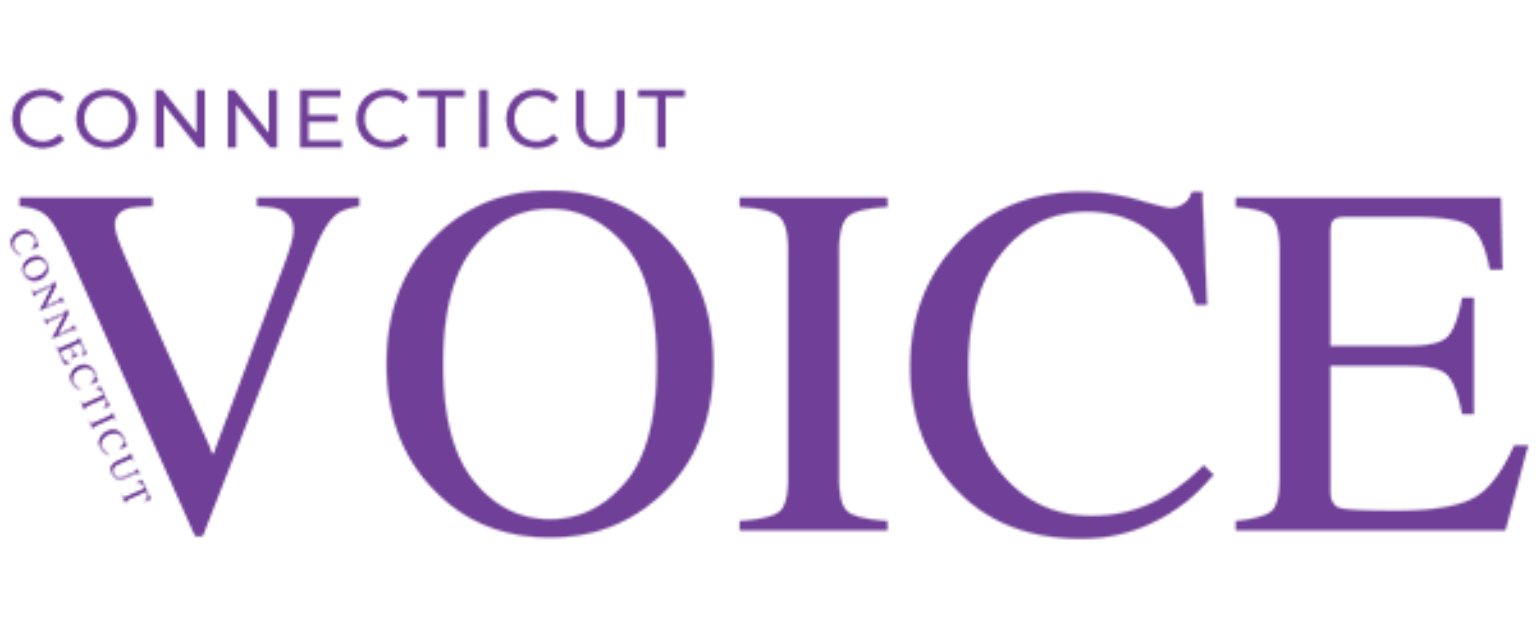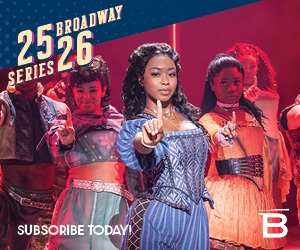As June approaches and the quarantine remains, it looks like we’ll be celebrating Pride Season a little different than usual. Regardless, it’s still the perfect time to learn about our community and celebrate the changes we’d made to history. And what better way to do that than supporting one of our local writers!
A Connecticut native, Sarah Prager is an writer and speaker who is dedicated to raising youth awareness of LGBTQ+ history. In her second book Rainbow Revolutionaries: Fifty LGBTQ+ People Who Made History (Harper Collins, May 26, 2020), you can learn about a variety of wonderful, fierce figures, from familiar names like Sylvia Rivera to unexpected entries like Alexander the Great. It’s a can’t-miss illustrated middle-grade collection, and Prager hopes the biographies will inspire young readers to embrace their history and make a difference.
We spoke with Prager about diverse stories and getting involved. Rainbow Revolutionaries is available for pre-order; we encourage you to shop at your local bookstore. Feel free to join us at Prager’s book launch on Facebook Live and YouTube Live!
CT VOICE: Your book features fifty LGBTQ+ people who made history. How did you go about researching and narrowing down your list? Are there any names your readers might be surprised to find in Rainbow Revolutionaries?
SARAH PRAGER: Even though fifty sounds like a lot of people, narrowing it down was a real challenge. Some are so well-known already, like Sylvia Rivera, Marsha P. Johnson and Harvey Milk. But many others haven’t received as much mainstream recognition, like Tshepo Ricki Kgositau and Maryam Khatoon Molkara. These are names that might not be familiar to American middle schoolers. And readers might be surprised to find famous figures who typically aren’t associated with the LGBTQ+ community, like Greta Garbo, Sally Ride, and Alexander the Great.
In my process, my main goal was to offer a mix of diverse stories. Not just in terms of race, gender, nationality, but also time period and profession. For instance, there were several LGBTQ+ blues musicians from the 1920s, but I chose one for the book. I also wanted to include asexual people, intersex people, and bisexual people—I wanted to make sure there were as many people represented as possible.
CT VOICE: For many figures in the book, like Greta Garbo, the framework of LGBT identity did not exist in their lifetimes, so they didn’t describe their queer desire according to our contemporary standards. Some of the more modern figures, such as Sylvia Rivera, were also known to actively reject the label of LGBT. How did you grapple with this notion in your book? What do you think is the important thing for readers to keep in mind about the contexts of these figures’ lives?
SARAH PRAGER: In the biographies, I made sure not to use modern-day labels. The modern terms are listed in the book’s glossary, but I make sure not to assign an ahistorical label. For a person who was assigned male at birth but lived as a woman, I didn’t use the term “transgender,” because the word transgender is just a few decades old, but I do write that they transitioned. I don’t apply the term transgender to Sylvia Rivera, but I do describe her activism for trans rights.
As far as context, we always have to look at historical figures in the context of their time and place. LGBTQ+ identities have been constructed in hundreds of ways, and Rainbow Revolutionaries looks at a few of them. The history of same sex love and gender fluidity and other aspects of the LGBTQ+ community goes back centuries, though. Ultimately, I use the term LGBTQ+ as an umbrella term—that’s where the “plus” comes in.
CT VOICE: Something I admire about Rainbow Revolutionaries is that you include figures from all around the globe: China, South Africa, Mexico, and beyond. Why did you feel it was important to go further than just the United States?
SARAH PRAGER: Our history is far more than just U.S. history or Western history, and I wanted my readers to know that LGBTQ+ history is not just a Western phenomenon. This is important because it’s important for an American, straight, cisgender young reader might not have ever been aware of LGBTQ+ people in other parts of the world, because the only LGBTQ+ people they’ve seen in the media are Americans. So that’s why I included a person who was brought as a slave from Africa to Brazil—when a reader learns about our history, it’s important for them to acknowledge this. Our history is all history.
CT VOICE: I loved the illustrations in Rainbow Revolutionaries. What was it like working with Sarah Papworth? Why did you want to feature a visual component to LGBTQ+ history?
SARAH PRAGER: I can’t describe just how exciting it was to collaborate with Sarah on these full-page color portraits. Some of the people in the book have never had an artist do a professional portrait of them, and I loved giving them that honor. Sarah did an incredible job on the detail in the illustrations—her creativity blew me away. For instance, Dr. Alan L. Hart had his name written out in bones, because he pioneered X-ray technology. Or, we made sure to portray José Sarria wearing red high heels, because he always wore red high heels when he performed in drag.
Things like that were so fun for us, and it also pushed the research further! The street names are accurate, for instance. And in Sylvia Rivera’s portrait she is surrounded by stars, which is meant to represent her organization STAR (Street Transvestite Action Revolutionaries). Plus, in the book we included a world map, a spread of LGBTQ+ pride flags, and a spread of pride symbols throughout the years. A lot of illustration went into the book beyond just the portraits.
CT VOICE: In the book’s intro, you write that you hope to show your readers how to make a difference. What do you believe are the first steps we can take towards becoming Rainbow Revolutionaries?
SARAH PRAGER: What a great question! Maybe I’m biased, but I believe teaching our youth LGBTQ+ is the first step. We are a part of every facet of history, it helps society recognize that we need equality. It dispels the myth that our identities are a fad or a trend, and it teaches people to respect the young people who are coming out of the closet.
When you read the stories in Rainbow Revolutionaries, they are a blueprint for activist strategies that can be used today. Bayard Rustin, for example, was a lead organizer on the 1963 March on Washington—he was LGBTQ+. I also hope an LGBTQ+ reader will understand that they belong in tech, because Alan Turing was the original LGBTQ+ techie. And we are underrepresented in the tech industry, but helping people understand this history will help alleviate this disparity. And that is true for all of the professions in the book, from tech to sports to politics.










More Stories
Broadway Review: Art
Fall Arts Preview: Emus, Foxes and Eric Clapton, Too
Diane DiMassa Book Event September 25